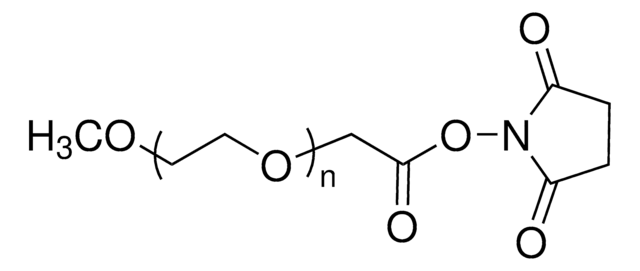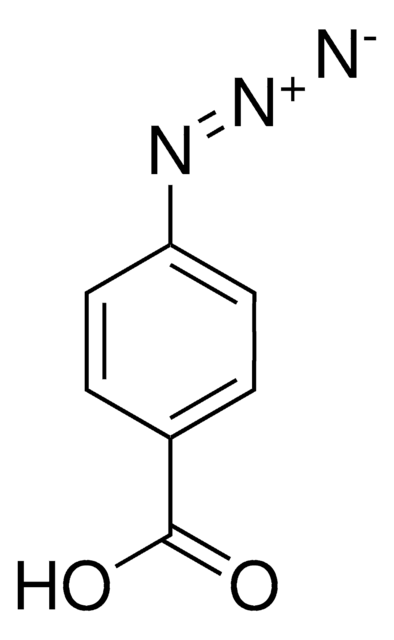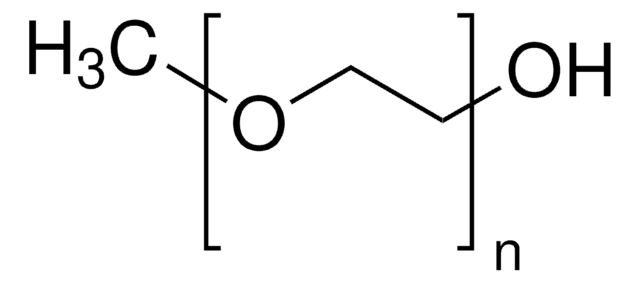17928
O-Methyl-O′-succinylpolyethylene glycol 2′000
Sinonimo/i:
Polyethylene glycol, O-(Succinyl)-O′-methylpolyethylene glycol 2′000, Polyethylene glycol 2′000 monomethyl ether succinate
About This Item
Prodotti consigliati
Stato
powder
Livello qualitativo
PM
Mr ~2100
Punto di fusione
50-53 °C
Estremità Ω
carboxylic acid
Estremità α
methoxy
Temperatura di conservazione
−20°C
Applicazioni
Azioni biochim/fisiol
Codice della classe di stoccaggio
11 - Combustible Solids
Classe di pericolosità dell'acqua (WGK)
WGK 3
Punto d’infiammabilità (°F)
Not applicable
Punto d’infiammabilità (°C)
Not applicable
Dispositivi di protezione individuale
dust mask type N95 (US), Eyeshields, Gloves
Scegli una delle versioni più recenti:
Certificati d'analisi (COA)
Ci dispiace, ma al momento non ci sono COA disponibili online per questo prodotto.
Se ti serve aiuto, non esitare a contattarci Servizio Clienti
Possiedi già questo prodotto?
I documenti relativi ai prodotti acquistati recentemente sono disponibili nell’Archivio dei documenti.
I clienti hanno visto anche
Articoli
Professor Randal Lee (University of Houston, USA) discusses design considerations for iron oxide magnetic nanospheres and nanocubes used for biosensing, including synthetic procedures, size, and shape. The effects of these variables are discussed for various volumetric-based and surface-based detection schemes.
Il team dei nostri ricercatori vanta grande esperienza in tutte le aree della ricerca quali Life Science, scienza dei materiali, sintesi chimica, cromatografia, discipline analitiche, ecc..
Contatta l'Assistenza Tecnica.
![O-[(N-Succinimidyl)succinyl-aminoethyl]-O′-methylpolyethylene glycol 2′000](/deepweb/assets/sigmaaldrich/product/structures/426/156/518cf3f3-8b50-4c91-8501-929224a040d2/640/518cf3f3-8b50-4c91-8501-929224a040d2.png)


![O-[(N-Succinimidyl)succinyl-aminoethyl]-O′-methylpolyethylene glycol average Mn 750](/deepweb/assets/sigmaaldrich/product/structures/244/886/c80fd8d8-9a62-4a97-be17-32d83ffd1dfb/640/c80fd8d8-9a62-4a97-be17-32d83ffd1dfb.png)









